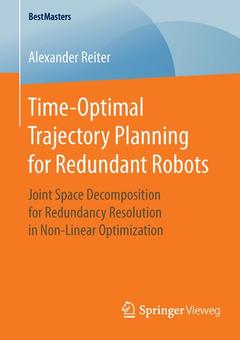Description
Time-Optimal Trajectory Planning for Redundant Robots, 1st ed. 2016
Joint Space Decomposition for Redundancy Resolution in Non-Linear Optimization
BestMasters Series
Author: Reiter Alexander
Language: English
Subject for Time-Optimal Trajectory Planning for Redundant Robots:
Keywords
Robots; Optimization; Redundancy; Kinematics; Dynamics; Mechatronics; Redundanz; Kinematik; Industrieroboter; Optimierung; Mechatronik; Dynamik
Support: Print on demand
Description
/li>Contents
/li>Biography
/li>Comment
/li>
NURBS Curves.- Modeling: Kinematics and Dynamics of Redundant Robots.- Approaches to Minimum-Time Trajectory Planning.- Joint Space Decomposition Approach.- Examples for Applications of Robots.
Alexander Reiter is a Senior Scientist at the Institute of Robotics of the Johannes Kepler University Linz in Austria. His major fields of research are kinematics, dynamics, and trajectory planning for kinematically redundant serial robots.
Study in Robotics
Includes supplementary material: sn.pub/extras




